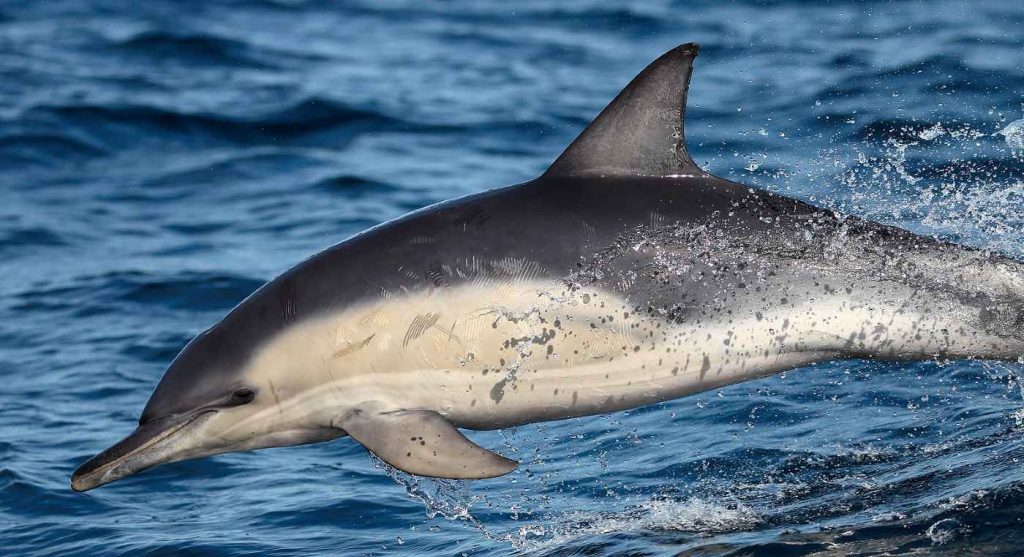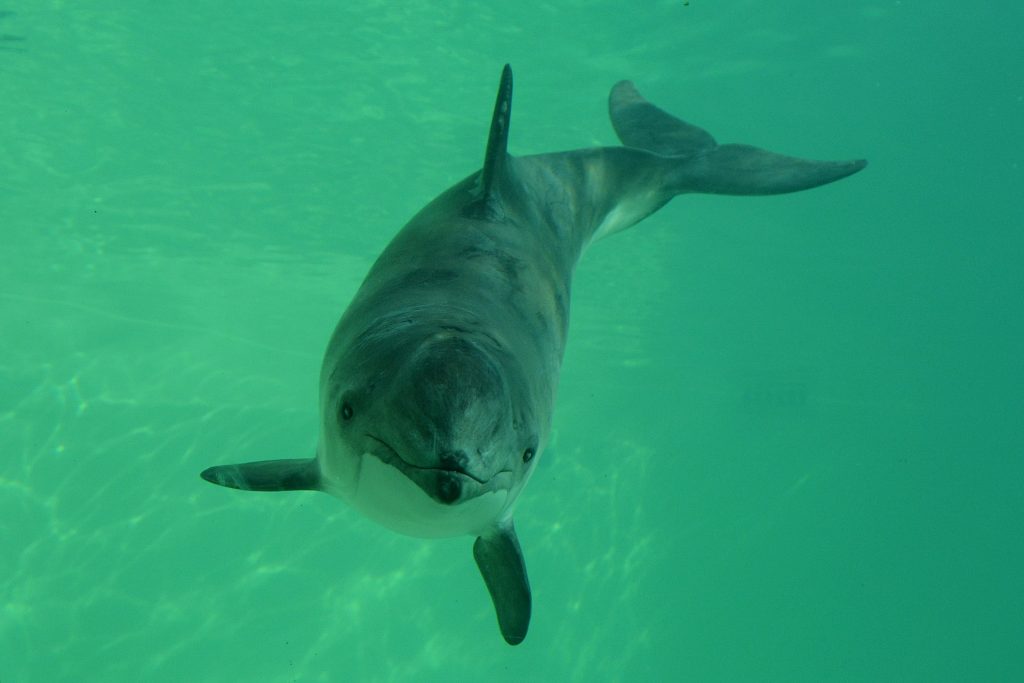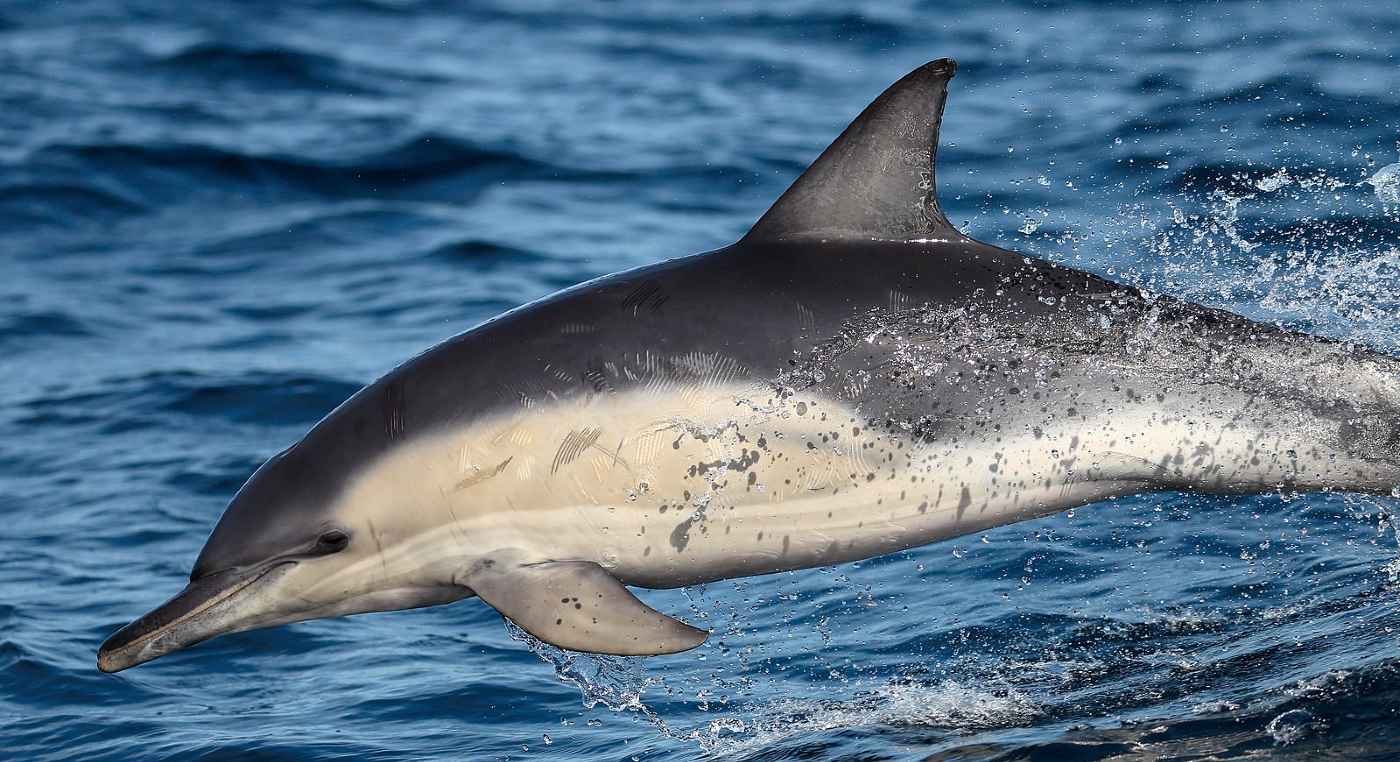
A dolphin that lives alone among harbor porpoises has been found to change its vocalization in an attempt to pick up the langue of its neighbors.
This has never been confirmed in the wild before, but must be taking place since the dolphin has completely abandoned its normal sounds for the porpoises’ clicks—even when she’s completely alone.
It may be that Kylie, a common dolphin in the Firth of Clyde, Scotland, isn’t trying to talk to the porpoises, but that she identifies as one. After all, she often lives alone in the Firth, and biologists believe she may have been separated from her natal pod during a storm.
One such biologist is David Nairn, working at the research, education, and advocacy program Clyde Porpoises. Nairn towed a hydroacoustic microphone behind his sailing yacht to capture multiple audio recordings between Kylie the dolphin and her porpoise neighbors.
“While harbor porpoises basically produce one type of sound: highly stereotyped high-frequency clicks, common dolphins have a wide repertoire, emitting clicks as well as whistles,” writes Mel Constentino, a bioacoustics expert at the Center for Ultrasonic Engineering at the Univ. of Strathclyde, Glasgow.
RELATED: Climate-Resilient Coral Offers Hope to World’s Reefs, Able to Cope With 2ºC of Global Warming
Constentino was able to study Nairn’s recordings and publish a paper on them last year.
Harbor porpoises exclusively talk in narrow-band high frequency clicks at a pitch six-times higher than the highest pitch humans can hear: around 130 kilohertz. Dolphins have a variety of lower frequency sounds, and also whistles. Only the thing is Kylie never whistles, even when alone.

“The results are tantalizing,” dolphin expert Denise Herzing told National Geographic. “What’s really telling is that Kylie doesn’t make any whistles, because dolphins always make whistles and porpoises never do.”
Not all of Kylie’s clicks reach 130 kilohertz: some are much higher and others lower, suggesting that perhaps she’s attempting to communicate. Herzing offers the insight that she is making an attempt to communicate which the porpoises probably recognize.
Almost more striking than the communication is the position Kylie enjoys in the porpoise circles. Some of the females bring their calves to interact and meet Kylie, and the young ones even swim with her “in echelon,” a marine mammal term for the position just behind the pectoral fin, and the equivalent of being carried.
Furthermore, Nairn says some of the males have tried to mount her, adding in the most Scottish of dialogue “I would even say she courts, aye.” GNN reported earlier this year on an orphan narwhal that has been adopted by a pod of beluga whales that swim regularly down the St. Lawrence River in Canada.
In the same way, it’s been proven a narwhal-whale hybrid has existed before. The anatomical structure of a porpoise and dolphin make a “dorpoise” theoretically plausible, but it’s never been confirmed.
From all this we can deduce that cetaceans, the family which include all these marine mega-mammals, is a very loving one.
SHARE This Sweet Story of Animal Friendship With Pals…




















